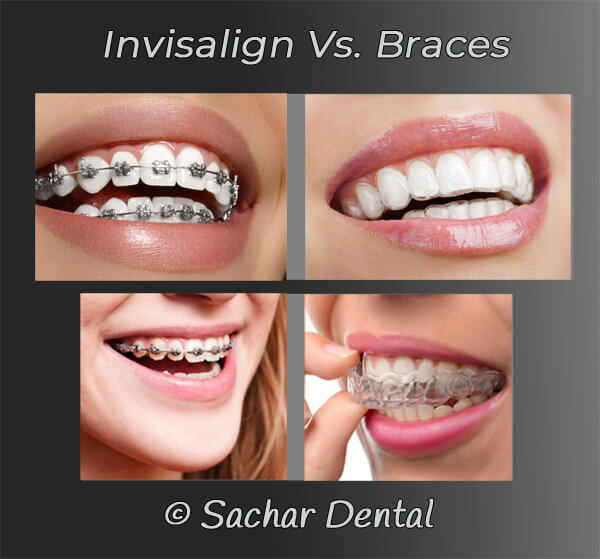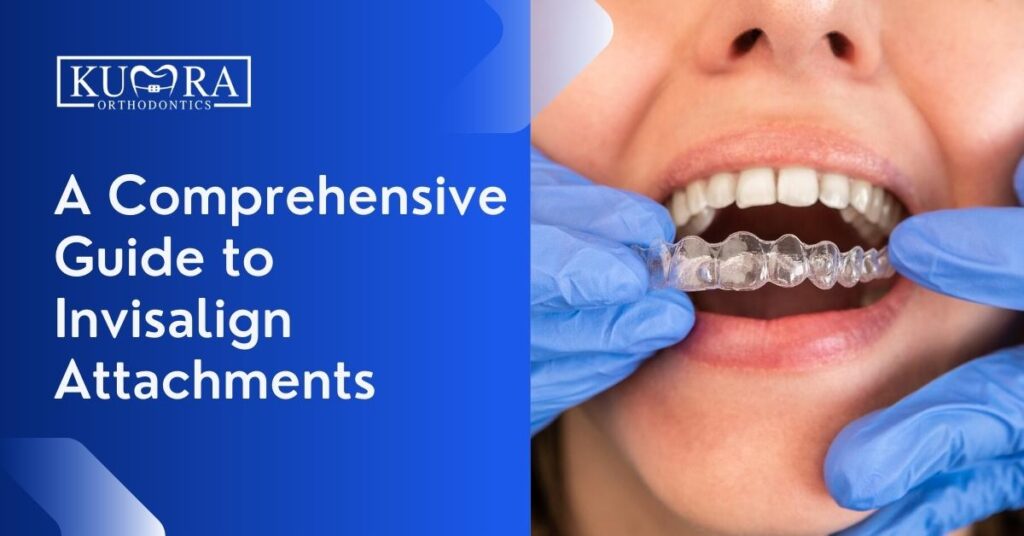How Invisalign Functions: Your Overview to Clear Aligners and Their Effectiveness
How Invisalign Functions: Your Overview to Clear Aligners and Their Effectiveness
Blog Article
Invisalign vs. Traditional Braces: Which Choice Is Right for You?
When taking into consideration orthodontic treatment, the selection between Invisalign and standard dental braces presents numerous essential aspects that merit cautious examination. Invisalign offers a discreet alternative with detachable aligners, while conventional braces give an extra noticeable yet effective service for severe misalignment. Each option encompasses distinct benefits and drawbacks related to appearances, convenience, therapy period, and expense. Comprehending these nuances is vital for making an educated choice that straightens with your individual choices and way of life. The concern continues to be: which choice will ideal fulfill your orthodontic requirements and assumptions?
Overview of Therapy Choices

In comparison, typical dental braces are composed of metal brackets and cords that are bonded to the teeth. This technique uses continual pressure gradually to attain alignment. While efficient for intricate orthodontic issues, conventional dental braces call for regular brows through for adjustments and can position difficulties in keeping oral hygiene because of the trouble of cleansing about brackets and wires.
Both alternatives have their benefits, and the selection usually hinges on particular oral problems, way of living preferences, and person compliance. Ultimately, seeking advice from an orthodontic specialist is crucial for figuring out the most appropriate therapy strategy tailored to private requirements. Comprehending the nuances of each option can considerably influence the overall success of orthodontic therapy.
Aesthetic Factors To Consider
A significant factor influencing the choice between Invisalign and typical braces is the aesthetic allure each treatment supplies. Invisalign aligners are crafted from clear plastic, making them practically unnoticeable when used.
In comparison, standard dental braces contain metal braces and cables, which can be much more noticeable. While improvements in orthodontic technology have actually led to the growth of smaller braces and colored elastics, standard dental braces still preserve an even more conspicuous account. For some people, the exposure of dental braces may hinder them from seeking necessary treatment.
Inevitably, the choice in between Invisalign and traditional dental braces might rest on personal choices concerning aesthetics. People who focus on discernment typically favor Invisalign, while those who are less concerned concerning visibility may go with traditional braces. Comprehending the visual implications of each option is vital for making an educated decision that lines up with one's way of life and choices.
Convenience and Convenience

In terms of benefit, Invisalign aligners are detachable, allowing patients to useful link appreciate their preferred foods without limitation and maintain optimum oral health. Cleaning and flossing are simplified, as the aligners can be obtained throughout these routines, whereas typical dental braces require mindful navigating around brackets and cords.
In addition, Invisalign's modern system enables less orthodontic sees. Clients typically receive numerous sets of aligners simultaneously, which can enhance the treatment procedure and decrease time invested in the orthodontist's chair. In comparison, conventional dental braces require regular changes, making them less hassle-free for those with hectic schedules. Invisalign. On the whole, the comfort and ease of Invisalign make it an attractive choice for many people seeking orthodontic therapy.
Therapy Duration and Efficiency
While click for source both Invisalign and typical braces are efficient in remedying oral misalignments, the duration of treatment can differ dramatically between both alternatives. Generally, Invisalign treatment can take anywhere from 12 to 18 months, depending upon the intricacy of the instance. The clear aligners work by gradually shifting teeth into their preferred placements, and regular follow-ups with an orthodontist assistance make sure progression remains on track.
In comparison, typical braces typically call for a longer dedication, usually ranging from 18 months to three years. This is due to their fixed nature and making use of braces and cords, which can be more efficient for complex situations and extreme misalignments (Invisalign). The therapy performance of traditional braces is well-documented, as they enable exact adjustments and greater control over tooth motion
Eventually, the selection between Invisalign and traditional dental braces might rest on both the awaited treatment period and the particular dental issues at hand. Consulting with an orthodontist is vital, as they can supply customized referrals based on individual demands, making certain the picked technique aligns with wanted durations and end results.
Expense Contrast and Insurance Policy Choices
Cost plays a significant duty in the decision-making process for individuals taking into consideration orthodontic therapy, whether choosing for Invisalign or traditional dental braces. Generally, web the cost of Invisalign arrays from $3,000 to $8,000, while standard braces generally set you back between $2,000 and $6,000. Factors affecting these expenses include the intricacy of the situation, the period of therapy, and geographical area.
Insurance policy insurance coverage can substantially affect out-of-pocket expenses. Many dental insurance coverage strategies give partial insurance coverage for orthodontic therapies, however the specifics can differ widely. It is critical for clients to assess their insurance coverage to identify the level of coverage for either choice. Generally, standard dental braces may be a lot more frequently covered by insurance coverage strategies compared to Invisalign, which some insurance providers classify as a cosmetic treatment.
In addition, a number of orthodontic techniques provide versatile layaway plan, making both therapy alternatives much more obtainable. Patients must ask about potential funding options and discount rates for ahead of time payments. Assessing the complete cost, including insurance coverage advantages and payment strategies, is important for making an educated decision that lines up with both visual preferences and budget plan considerations.

Final Thought
In recap, the option between Invisalign and conventional braces rests on multiple factors, consisting of visual choices, convenience, therapy period, and expense. Invisalign provides a discreet, removable alternative that facilitates dental health and dietary flexibility, while traditional dental braces may be more suitable for intricate oral problems and commonly come with a lower cost point. Inevitably, appointment with an orthodontist is necessary to examine individual circumstances and establish one of the most suitable therapy alternative for accomplishing ideal dental placement.
When taking into consideration orthodontic therapy, the option between Invisalign and conventional dental braces provides several vital aspects that merit careful examination.Comparing Invisalign and typical dental braces reveals unique treatment choices for orthodontic improvement.While both Invisalign and typical braces are reliable in correcting oral misalignments, the duration of therapy can vary significantly between the 2 options.Price plays a significant function in the decision-making procedure for individuals thinking about orthodontic therapy, whether choosing for Invisalign or typical braces.In summary, the selection between Invisalign and typical braces pivots on numerous elements, consisting of aesthetic choices, comfort, treatment duration, and cost.
Report this page